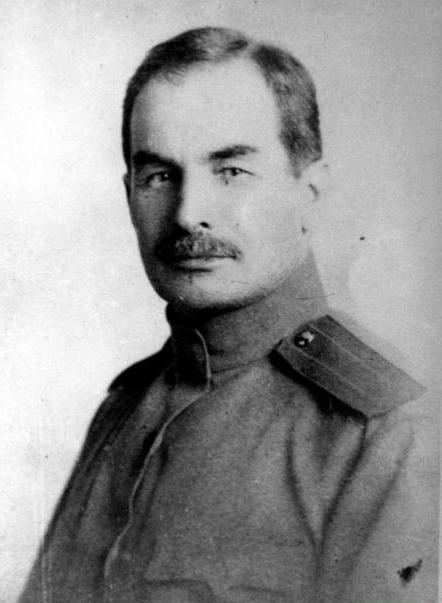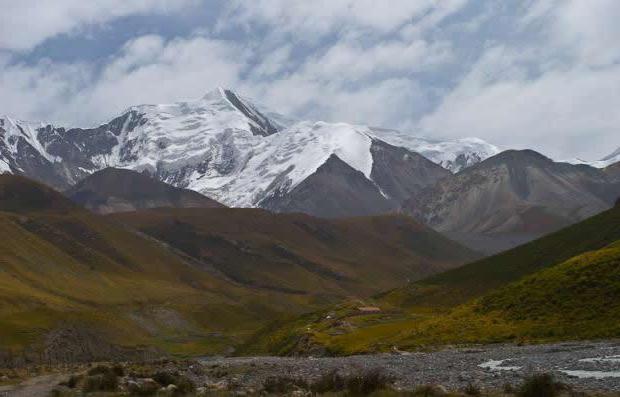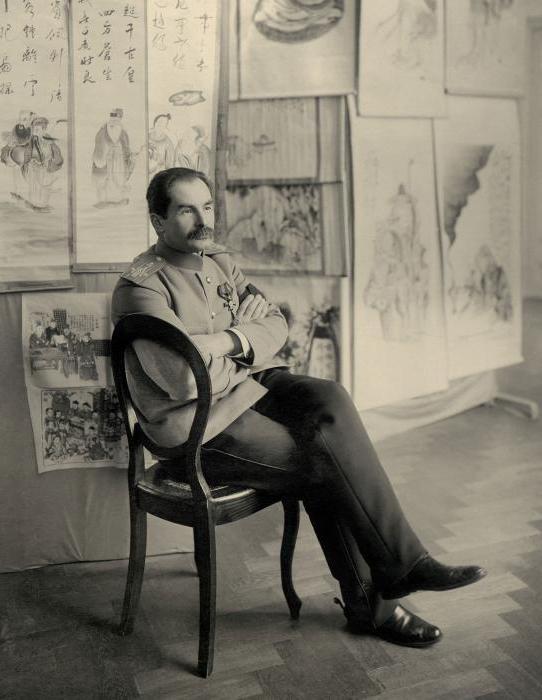Kozlov Peter Kuzmich (1863-1935) - Russian traveler, explorer of Asia, one of the prominent participants in the Great Game. He was an honorary member of the Russian Geographical Society, a member of the Academy of Sciences of the Ukrainian SSR and one of the first biographers of Przhevalsky. Today we will get acquainted with the life and work of this outstanding person in more detail.
Childhood
Kozlov Petr Kuzmich, whose interesting facts we will consider today, was born on October 15, 1863 in the small town of Duhovschina, belonging to the Smolensk province. The mother of the future traveler was constantly engaged in farming. And father was a petty merchant. Parents paid little attention to children and did not care at all about their education. Every year , Peter's father drove cattle from Ukraine for a wealthy industrialist. When Peter grew up a little, he began to ride with his father. Perhaps it was during these trips that the boy first fell in love with distant wanderings.
Peter grew up almost independently of his family. From an early age, an inquisitive child fell in love with books. The boy could read travel stories all day long. Later, having become a famous person, Kozlov will be stingy with childhood stories, obviously, due to the lack of vivid impressions.
Youth
At age 12, the boy was sent to a four-year school. After graduating from her 16 years, Peter began to serve in the office of a brewery, located 66 kilometers from his hometown. Uninteresting monotonous work completely did not satisfy the curious energetic young man. He tried to engage in self-education and decided to enter a teacher's institute.
Shortly before this, various scientific institutes, geographical communities and topographic services of England, Germany, France, Japan and China began to actively explore Asia. Soon, the Russian Geographical Society, created in 1845, was activated. The big game was moving from military confrontations into a scientific race. Even at a time when Kozlov was engaged in grazing horses in the Smolensk meadows, his fellow countryman Nikolai Mikhailovich Przhevalsky was already on the pages of newspapers and magazines. Young people enthusiastically read fascinating travel reports of the researcher, and many young men dreamed of repeating his exploits. Kozlov read about Przhevalsky with special enthusiasm. Articles and books prompted a romantic love of Asia in him, and the personality of the traveler took on the form of a fairy-tale hero in Peter's imagination. However, the young man's chances of such a fate were, to put it mildly, small.
Acquaintance with Przhevalsky
By chance, Kozlov Peter Kuzmich once met his idol. It happened in the summer of 1882 near Smolensk, in the town of Sloboda, where, after another expedition, the famous Asian conqueror came to rest in his estate. Seeing in the evening a young man thinking in the garden, Nikolai Mikhailovich decided to ask him what he was so passionate about. Turning around and seeing his idol in front of him, Peter was beside himself with happiness. Taking a breath, he answered the scientist his question. It turns out that Kozlov thought that the stars he contemplated in Tibet seemed much brighter and that he was unlikely to ever be convinced of this personally. The future traveler replied to Przhevalsky with such sincerity that he, without even thinking, invited him to an interview.

Despite the difference in age and social status, the interlocutors were very close in spirit. The scientist decided to take his young friend under the protection and step by step bring him into the world of professional travel. Between Kozlov and Przhevalsky, a sincere friendship developed over time. Feeling that Peter was completely surrendering to the cause, to which the scientist himself was sincerely devoted, he took upon himself the responsibility to take an active part in the life of the young man. In the autumn of 1882, Nikolai Mikhailovich invited a young friend to move to his house and do accelerated training there. Life in the idol's estate seemed to Kozlov a fabulous dream. He was shrouded in the fascination of fascinating tales of wandering life, as well as the greatness and natural beauty of Asia. Then Peter firmly decided that he should become a colleague of Przhevalsky. But first, he needed to get a full secondary education.
In January 1883, Kozlov Peter Kuzmich passed the exam for a full-fledged course of a real school. Then he had to go through military service. The fact is that Nikolai Mikhailovich took only those with a military education as part of his expeditionary group. He had several objective reasons for this, the main of which was the need to repel the armed attacks of the natives. After serving three months, Pyotr Kuzmich was credited to the fourth expedition of Przhevalsky. The hero of our review remembered this event for life.
First trip
The first trip of Kozlov as part of the Przhevalsky expedition took place in 1883. Her goal was to study East Turkestan and Northern Tibet. This expedition became a wonderful practice for Kozlov. Under the guidance of an experienced mentor, he tempered a real researcher in himself. The harsh nature of Central Asia and the struggle with numerically superior locals contributed to this. The first trip was for a novice traveler, despite all his enthusiasm, very difficult. Due to the increased humidity, researchers had to spend most of their time in wet clothes. The weapons succumbed to corrosion, personal belongings quickly dampened, and plants collected for the herbarium were almost impossible to dry.
In such conditions, Petr Kuzmich learned to glancely photograph rugged terrain, determine heights and, most importantly, research observation of nature, which involves the discovery of its main features. In addition, he met with the organization of an expeditionary campaign in adverse climate conditions. According to the traveler, the study of Central Asia became for him a guiding thread that determines the entire course of his future life.
Homecoming
Returning home after a 2-year expedition, Kozlov Peter Kuzmich continued to actively develop in the chosen direction. He expanded his knowledge in the field of natural sciences, ethnography and astronomy. Almost before being sent to the next expedition, Pyotr Kuzmich was promoted to officer, having graduated from the St. Petersburg Military School.
Second expedition
In the fall of 1888, Kozlov set off on his second journey under the leadership of Przhevalsky. But at the very beginning of the expedition, near Mount Karakol, not far from Lake Issyk-Kul, the great explorer N. M. Przhevalsky fell very ill and soon died. According to the dying request of the traveler, he was buried on the shore of Lake Issyk-Kul.
The expedition was resumed next fall. Colonel M.V. Pevtsova was appointed its leader. The latter took command with dignity, although he understood that he would not succeed in fully replacing Przhevalsky. In this regard, it was decided to shorten the route, limiting the study of Chinese Turkestan, Dzungaria and the northern part of the Tibetan Highlands. Despite the fact that the expedition turned out to be curtailed, its participants managed to collect very voluminous historical and geographical material, a significant proportion of which belonged to Peter Kozlov, who is mainly engaged in the study of East Turkestan.
Third expedition
The next trip of Kozlov took place in 1893. This time, the research campaign was led by V. I. Roborovsky, who once performed the duties of senior assistant to Przhevalsky. The purpose of this trip was to study the northeastern corner of Tibet and the Nian Shan mountain range. On this trip, Petr Kuzmich conducted independent surveys of the surroundings. Sometimes he had to walk alone up to 1000 kilometers. At the same time, he collected the lion's share of the zoological collection of this expedition. When V. I. Roborovsky halfway began to complain about his health, Kozlov was entrusted with the leadership of the expedition. He successfully coped with the task and completed the job. Returning to his homeland, the researcher presented a report that was entitled “Report by the assistant to the expedition chief P.K. Kozlov.”
First independent expedition
In 1899, the traveler first acted as the head of the expedition. The aim of the participants was to get acquainted with Mongolia and Tibet. 18 people took part in the campaign, of which only 4 researchers, all the rest - a convoy. The route began at the Altai post station, located not far from the Mongolian border. Then he ran through the Mongolian Altai, the Central Gobi and Kama - almost uncharted areas of the eastern side of the Tibet Plateau.
Carrying out research on the upper reaches of the Yellow River, Mekong and Yangtze-Jiang, expeditioners have repeatedly encountered natural obstacles and aggression of the natives. Nevertheless, they managed to collect unique orographic, geological, climatic, zoological and botanical materials. Also, travelers shed light on the life of little-known East Tibetan tribes.
The Russian explorer of Mongolia, who headed the expedition, personally made a detailed description of various natural objects, including: lying at an altitude of 3200 meters and having a circumference of 385 kilometers of Lake Kukunor; the sources of the Yalongjiang and Mekong rivers, as well as a pair of ridges of the Kunlun system that were previously unknown to science. In addition, Kozlov made brilliant essays on the life of the population and economy of Central Asia. Among them, the rituals of the Tsaidam Mongols are especially notable.

From the Mongol-Tibetan expedition, Kozlov brought an abundant collection of flora and fauna of the studied territories. During the trip, he often had to deal with armed detachments of local residents, the number of which reached 300 people. Due to the fact that the campaign dragged on for almost two years, rumors reached Petersburg about its complete failure and death. But this could not allow Kozlov Peter Kuzmich. The books Mongolia and Kam and Kam and the Way Back described this journey in detail. For such a successful expedition, Kozlov received the gold medal of the Russian Geographical Society. So the Big Game got another bright defendant.
Mongol-Sichuan expedition
In 1907, an honorary member of the Russian Geographical Society went on his fifth trip. This time the route ran from Kyakhta to Ulan Bator, then to the middle and southern regions of Mongolia, the Kukunor region and, finally, to the north-west of Sichuan. The most significant discovery was the discovery in the Gobi desert of the remains of the dead city of Hara-Hoto, which were covered with sand. When excavating the city, a library of two thousand books was found, the lion's share of which is written in the language of the state of Xi-Xia, which later turned out to be the Tangut language. This discovery was exceptional, because no museum in the world has such a large collection of Tungut books. Findings from Hara-Hoto play an important historical and cultural role, as they clearly depict different aspects of life and culture of the ancient state of Xi-Xia.
The expedition members collected extensive ethnographic material about the Mongolian and Tibetan peoples. They paid special attention to Chinese antiquity and the Buddhist cult. Many zoological and botanical materials were also collected. A special find of researchers was a collection of woodcuts for printing books and images, which were used centuries before the appearance of the first print in Europe.
In addition, the world's only collection of paper banknotes of the XIII-XIV centuries was found at Hara-Hoto. Also, the excavations of Hara-Hoto brought a lot of all kinds of figurines, religious figures and several hundred Buddhist images on silk, wood, paper and canvas. All this went to the museums of the Academy of Sciences and Emperor Alexander III.
After discovering and thoroughly examining the dead city, the expeditioners got acquainted with Lake Kukunor, and then the little-known Amdo territory, located in the bend of the Yellow River.
From this trip, the Russian explorer of Mongolia once again brought a rich collection of plants and animals, among which were new species and even genera. The scientist described the results of the trip in the book “Mongolia and Amdo and the Dead City of Hara-Hoto”, published only in 1923.
Nature reserve
In 1910, the traveler was awarded large gold medals of the English and Italian geographical societies. When Russia began to participate in the First World War, Colonel Kozlov showed a desire to join the ranks of the army. He was refused and sent to Irkutsk as the head of the expedition for harvesting livestock for the army.
At the end of the October Revolution, at the end of 1917, the explorer of Mongolia, China and Tibet, who at that time was already a major general, was sent to the reserve Askania-Nova of the Tauride province. The purpose of the trip is to take measures to protect the protected steppe plot and the local zoo. Sparing no energy, the scientist did everything possible to secure a unique natural monument. In October 1918, he reported to the Minister of Education that Askania-Nova was saved and her most valuable lands remained unscathed. To further protect the reserve, he asked that he be transferred to the Academy of Sciences of Ukraine and provided the opportunity to recruit 15-20 volunteers. At the same time, Kozlov requested that 20 rifles, sabers and revolvers, as well as the required number of cartridges for them be provided under his personal responsibility. At the end of 1918, during the particularly difficult period of the Civil War, thanks to the efforts of Major General Kozlov, almost 500 people worked in the reserve.
New expedition
In 1922, the Soviet leadership decided to organize an expedition to Central Asia, the head of which was appointed 60-year-old Kozlov Peter Kuzmich. The traveler’s wife, ornithologist Elizaveta Vladimirovna, made her husband’s expedition company for the first time. Despite his considerable age, the traveler was full of energy and excitement. During his sixth voyage, which lasted from 1923 to 1926, the scientist explored a relatively small part of northern Mongolia, as well as the upper basin of the Selenga River.

Once again, the traveler received significant scientific results. In the mountains of the Noin-Ula system, he discovered a little more than 200 burial grounds and excavated them. As it turned out, it was a 2000-year-old Hun burial. This archaeological discovery was one of the greatest in the twentieth century. The scientist, along with associates, found many items of ancient culture, thanks to which you can get a comprehensive picture of the economy and life of the Huns in the period: II century BC. e. - I century AD e. Among them was an extensive collection of artistically executed carpets and fabrics from the time of the Greco-Bactrian kingdom, which existed from the III century BC. e. to the 2nd century AD e. in the north of modern Iran, in Afghanistan and northwest India.
On the top of Mount Ihe-Bodo, located in the Mongolian Altai, at an altitude of about 3,000 meters, travelers discovered the ancient Khan's mausoleum.
However, the most significant discovery of Kozlov’s sixth expedition was the discovery of 13 generations of Genghis Khan’s descendants in the mountains of eastern Hangai. The researcher was the first European to be accepted by the lord of Tibet. From him, Kozlov received a special pass, which had to be presented to the mountain guard, protecting the approaches to the Tibetan capital Lhasa. However, the British prevented the entry of Russian scientists into Lhasa. The participant of the Great Game, Peter Kozlov, never got into this city. The report on the sixth expedition he published in the book “Journey to Mongolia. 1923-1926 "
Further activities
At the age of seventy, Kozlov Petr Kuzmich, whose discoveries became increasingly famous, did not leave his dreams of long trips. In particular, he planned to go to Lake Issyk-Kul in order to once again bow to the grave of his teacher and enjoy the local beauties. But the sixth journey of the researcher was the last. After him, he lived a quiet life as a pensioner in Leningrad and Kiev. However, he spent most of his time with his wife in a small log house in the village of Strechno (50 kilometers from Staraya Russa).
Wherever the traveler settled, he quickly became popular among neighboring youth. In order to convey his experience to curious young people, the researcher organized circles of young naturalists, traveled around the country with lectures, published his works and stories. The whole scientific world knew who Kozlov Peter Kuzmich was. Discoveries in Eurasia gave him recognition in any circles. In 1928, the Ukrainian Academy of Sciences elected him a full member. And the Russian Geographical Society awarded him a medal named after N. M. Przhevalsky. Among the researchers of Central Asia of the XX century, a Russian scientist occupies a special place.
Kozlov Peter Kuzmich died on September 26, 1935 from heart sclerosis. He was buried at the Smolensk Lutheran cemetery.
Wealth
In honor of Kozlov, the glacier of the Tabyn-Bogdo-Ola ridge was named. In 1936, in honor of the 100th birthday of the traveler, his name was assigned to the school of the town of Dukhovshchina, in which the scientist began to comprehend the world. In 1988, a traveler’s museum apartment was opened in St. Petersburg.
Kozlov Peter Kuzmich, whose brief biography came to an end, not only lived in the era of great discoveries, but also created it personally. He completed the elimination of the "white spot" on the map of Asia begun by Przhevalsky. But at the beginning of Kozlov’s journey the whole world was against him.